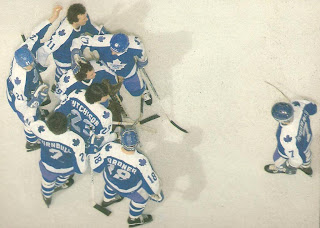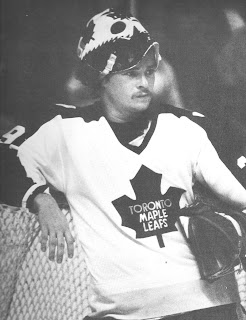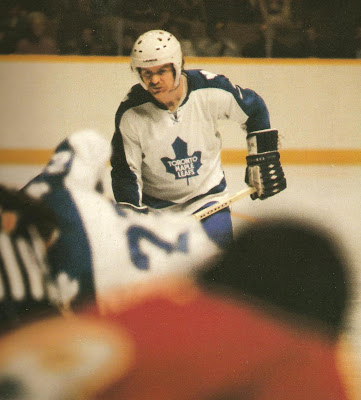The world always makes the assumption that the exposure of an error is identical with the discovery of the truth - that error and truth are simply opposite. They are nothing of the sort. What the world turns to, when it has been cured of one error, is usually simply another error, and maybe one worse than the first one. - H.L. Mencken
When it comes to going public with bad news, there are two types of organizations:
- Those that deal with it in an open and transparent manner – Tylenol is the oft-cited prototype in this camp and, much more recently, Maple Leaf Meats have shown the merit of being open, honest and accountable.
- Those who leak, bury or misdirect the news in an effort to control the message.
I’d say my beloved Toronto Maple Leafs usually fall into slot #2.
And what are some of the best tactics to get in front of a bad news story?
- Release it late on the Friday of a long-weekend;
- Release it when there’s a lot of other bad news in the system; and/or
- Leak the bad news early and leak it often – by the time the news becomes official or confirmed, most people will have moved through the five stages of grief from anger to acceptance.
When it comes to the Bryan McCabe trade, the Leafs have gone for door number 3 like the
RIAA going after a 12 year old with a USB drive full of Jonas Brothers mp3s and the outcome, strangely, seems to be acceptance.
What’s that Smell?The first time I went to Kamloops I was visiting an old friend who had just gotten engaged.
Kamloops stunk. Figuratively and literally.
The town is essentially a bowl built around a pulp mill. The scent of reduced sulphurs permeates everything.
The first few days I was in town, I kept asking my friend how he could live in a place that, um, stank. I don't mean to be cruel, but everything was tinted with the malodorous combination of cabbage and rotten eggs.
But then a strange thing happened: the smell seemed to go away. I no longer spent my days with a crinkled nose and worried brow wondering how people live among such a paralyzing stink.
Except the smell never went away.
The town still stunk of the by-products of supplying the world with
477,000 tonnes of pulp related products.
I just lost my ability to detect the stench.
Scientists call this phenomena olfactory adaptation or olfactory fatigue. Our nervous systems are programmed to automatically desensitize to certain stimuli so that we are not overloaded. For example, our skin doesn't constantly sense our clothing and our noses eventually get used to the gagging stink of pulp.
By turning down a response to certain or constant stimuli our bodies are better able to recognize and respond to new stimuli/possible threats.
If you've made it this far and are still reading, you may be asking yourself what pulp products, bad odours and olfactory adaptation have to do with the Leafs.
Stick with me here...
In Leaf Land it's not Pulp, it’s the Stench of FailureI wonder if maybe
Leafs Nation is undergoing a massive case of olfactory adaptation.
That we've become so used to the smell in these parts that they don't notice it anymore.
Slam McCabe all you want. Link to the youtube compilation videos of his various gaffes. Mock his haircuts, goofy faces and penchant for taking dumb penalties.
Go ahead and cringe at the burden of his no-movement clause.
But then step back and look at the numbers.
Three out of the last five seasons, McCabe was among the top 10 in scoring by a defenseman; three times he finished in the top three for goals.
Believe it or not, McCabe placed third in Norris trophy voting in 2004 and ninth in 2006.
He cracked the taxi squad for the 2006 Canadian Olympic squad. Bitch and moan all you want that he wasn’t in the top six on that club, but to be on the Canadian Olympic team is to be among some pretty elite company.
Despite all of these accomplishments and accolades, McCabe’s no-movement clause has allegedly so diminished his value that the Leafs had to include a draft pick in order to complete the deal.
Bottom line: the return for a number 2 d-man, power play quarterback, who can log 20+ minutes a night, who has a history of finishing in the top 10 in scoring (and who occasionally scores in the wrong net) is nothing more than a 3-4 d-man who’s recovering from multiple wrist surgeries.
And the Leafs had to throw in a 4th round pick to get the deal done.
As Steve points
out in his latest entry, and as I posted earlier this summer, the trade does nothing to solve the Leafs' log-jam on D where they're approaching the season with nine NHL caliber defencemen (10 if you think Schenn might get more than a cup of coffee with the big club).
Anyone that hasn't been living under a rock can tell you that the Leafs don't need more D; they don't need cap flexibility; they don't need to shed more draft picks.
And yet, that's what they get for a top pairing d-man.
The Toronto Maple Leafs: A Rich History of Horrible Asset ManagementI cannot believe that I’m going to
cite Damien Cox here, but he has a point (ick). The Leafs have moved a pretty big chunk of talent/assets off their roster in the last few years. Consider:
- Belfour
- Domi
- Tucker
- Wellwood
- Rask===>Raycroft (should have been ===>ECHL but for the Avs)
- McCabe
All gone for nothing more than Mike Van Ryn and a series of lingering cap hits.
If shedding all of those players for nothing weren't bad enough, Fletcher has spent even more assets to spackle over the same holes:
- Mayers for a third round pick
- Grabovski for a second round pick
- Schenn for a second and third round pick
- a Fourth round pick to kiss McCabe goodbye
Changing the Culture: Buying High and Selling LowI understand that management is trying to change the so-called culture of this club.
They gassed the coach (could only talk a good game), waived Wellwood (uncommitted, soft); bought-out Tucker (washed-up, psychopathic) and bought-out Raycroft (glove hand not good enough for mite T-ball).
But I’d argue that the real cultural change is far more urgently needed in the executive corridors of MLSE than in the locker room.
When Fletcher first came back to the Leafs, it was with a real sense of confidence. I loved his candid approach to assessing the team. I loved the moves he made at the trade deadline. I thought PM had to go and Wilson was a pretty solid replacement.
And then things regressed back to the norm. This team has a long twisted tradition of buying high and selling low, a philosophy that, once again, has stained all of Fletcher’s moves this summer.
The Leafs' story remains too many assets out the door with too little to show for it.
And the McCabe trade is just one more deal where the Leafs come out on the losing end.
Fletcher said last Tuesday: "
Trying to build a team can't be fast-tracked."
He may be right, but he's demonstrating that it sure can be chronically mismanaged.




